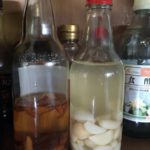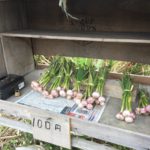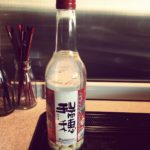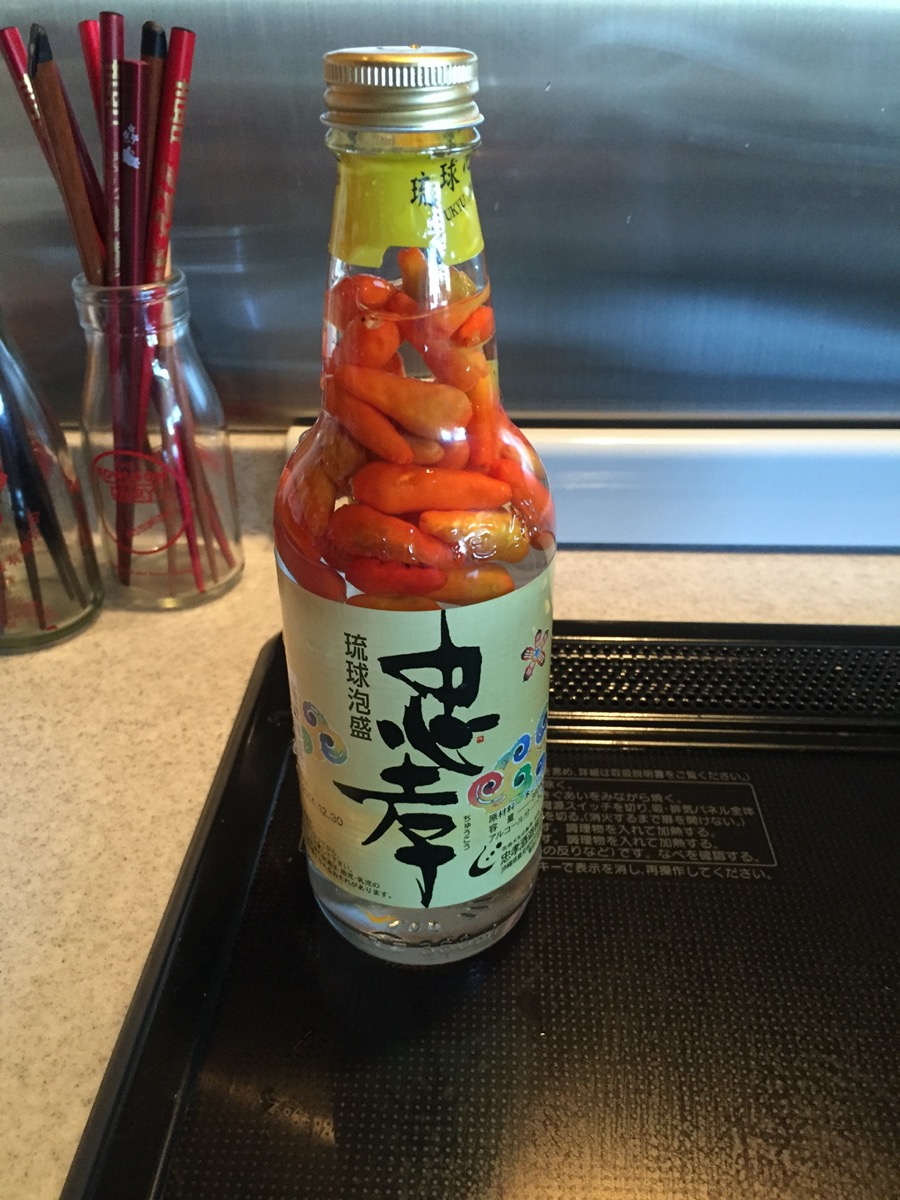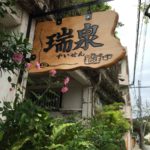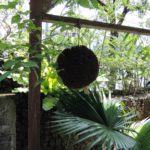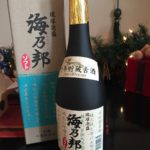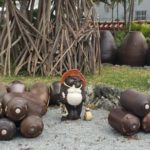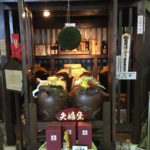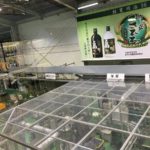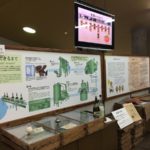In Kin town 金武町 (Northern part of Okinawa), there is a temple and limestone cave where a shrine is located as well as bottles of awamori 泡盛 are stored for aging.
The first thing you need to know is that there are 2 entrances to the cave: the one at the temple is FREE, but is blocked off from the awamori storage. You will still be able to see pretty stalactite and stalagmite formations and descend into a portion of the cave BUT you will not see the area where the awamori and tofuyo 豆腐よう are aged. The temple itself is not very grand, but it is one of the typical old temples in Okinawa (of which there are very few).
If you want to see where the awamori is stored, you will need to pay the fee for the tour (adults are 400yen, the tour is only offered 3x per day). To do this, head to Tatsu no kura 龍の蔵, awamori and tofuyo store (you can also try yummy samples here) which is located just across the street from the temple. Tatsu 龍 means “dragon,” another reference to the importance of the dragon god in the Ryukyu kingdom. The shop is named this since the cave is known as the auspicious birthplace of the dragon god faith. We bought tickets for the tour, which started at 1:30 that day. I would post a schedule for the tours, but honestly it seems to change randomly and the tour times available when we arrived were completely different from what it said on their website, so I would call ahead unless you randomly are lucky like we were.
The cave is a chilly 18 degrees Celsius and the tour is offered in Japanese. But you can still join and enjoy the scenery if you do not understand Japanese. Bottle storage services are offered for 5, 12 and 20 years; many customers store bottles here to commemorate a wedding or birth of a child. A lot of the bottles are decorated with messages.
Normally aged for just 3 months, the tofuyo here is aged for a year or more! It is pricy here, but really delicious… I recommend sampling it all. We bought some to take home. I have previously visited their branch store in Naha and ate their tofuyo, but it was the first time for my husband. It was interesting being able to see the cave where everything is aged and stored.
check out some pictures here: https://imgur.com/a/qJET5
address:
Kin Kannonji 金武観音寺: the parking lot is across the street from the temple. https://goo.gl/maps/5f94bKcMJXQ2
Tatsu no kura 龍の蔵: https://goo.gl/maps/dPy3C2BeQoF2
